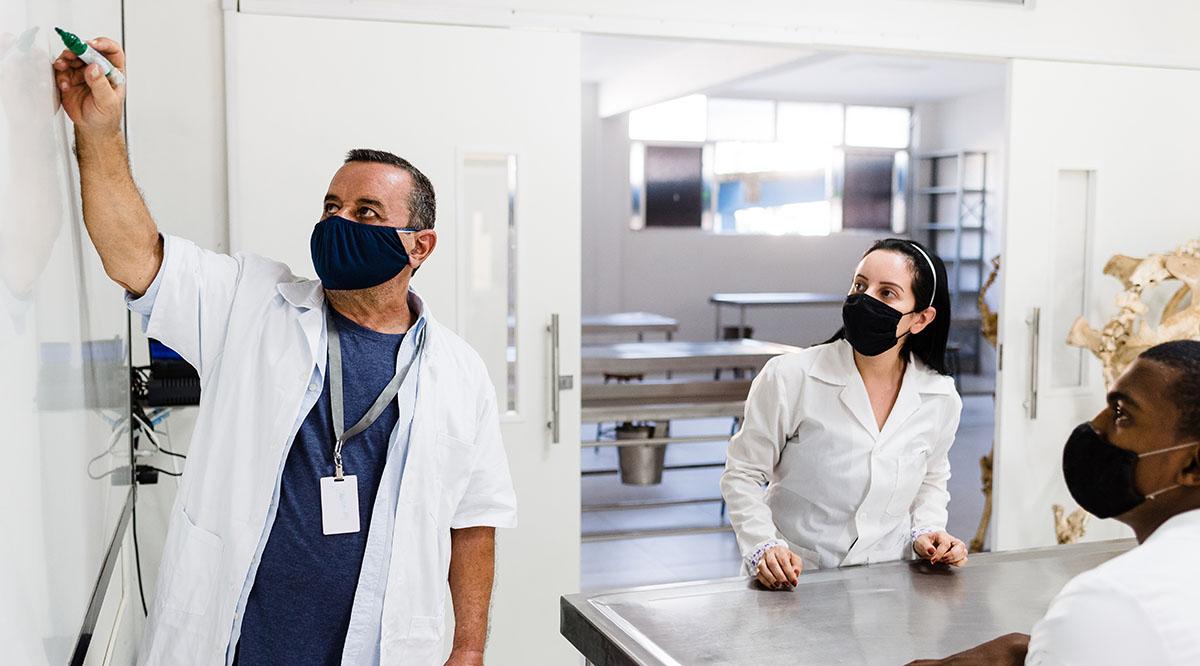The number of people entering medical school in the United States reached a two-decade high in 2020 with a total of 22,239 matriculants, according to new data from the AAMC (Association of American Medical Colleges). That number represents a 1.7% increase over the 2019 entering class.
Meanwhile, applicants for the class of 2021 are skyrocketing, with the number already up 18% compared to last year.
“This increased interest in medicine comes at a crucial moment,” said David J. Skorton, MD, AAMC president and CEO. “The pandemic is spotlighting the extraordinary services that physicians provide on the front lines. It’s heartening to see that more students want to pursue a career in medicine in order to serve their communities and make a difference.”
The data show that medical schools are also making gradual progress in diversifying their ranks while experiencing little growth — or even declines — in applicants from most underrepresented groups. One population showing a notable increase is Black or African American men: Their numbers in medical schools rose 6.2% overall, with a 12.2% increase in new students.
“We’re moving slowly in the right direction with more students from underrepresented groups entering medical school,” said Skorton, who also called for more progress in building a diverse physician workforce — an aim outlined in the AAMC’s new strategic plan. “Our goal is to keep increasing the number of students from underrepresented groups until they are no longer underrepresented in medicine,” he said.
Some key data help paint the picture of medical students from underrepresented backgrounds:
- Although the percentage of Hispanic, Latino, or Spanish-origin applicants dropped slightly, matriculants increased 8.6% to 2,678.
- The number of Black or African American applicants remained roughly the same, but matriculants increased by 10.5% to 2,117.
- American Indian or Alaska Native matriculants rose 7.8% to 248, while applicants in that group fell 4.3%.
The number of entering students identifying as Black or from other underrepresented groups rose overall. But those increases were concentrated only at a tiny number of schools, highlighting the important role of historically Black colleges and universities and Hispanic-serving institutions, experts say. “This underscores the critical role of minority-serving institutions, but it also shows that other schools must recommit to diversifying their classes to increase those historically underrepresented in medical school,” argued Geoffrey Young, PhD, AAMC senior director of student affairs and programs.
The report captures other significant trends as well:
Women are on the rise. Continuing a five-year trend, the number of women entering medical school increased again in 2020 while the number of men declined. In 2017, women edged out men for the first time among incoming medical students. Now they make up more than half of three categories: applicants, matriculants, and total medical school enrollees.
Medical schools are working to address shortages. Although the number of applicants dipped slightly from 2019, total matriculants rose as medical schools expanded their class sizes to help address the looming physician shortage. The number of enrollees in medical schools has grown nearly 35% since 2002, and 30 new schools have opened in recent decades. Meanwhile, the AAMC continues to urge Congress to lift caps on federally funded residency positions to help address the shortfall, which is expected to be as much as 139,000 physicians by 2033.
Students show great promise. Medical school students have impressive academic credentials — with an average undergraduate GPA of 3.73. They also show a commitment to service, including extensive contributions throughout the pandemic. Entering students averaged 644 volunteer hours each, for a total of more than 14 million hours of service across the country.

